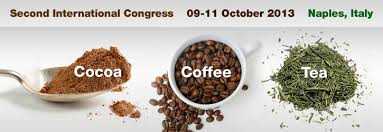Murkovic M. Institute of Biochemistry, Graz University of Technology, Graz, Austria E-mail: michael.murkovic@tugraz.at
At different stages of the roasting process a huge number of compounds is formed that contribute to the structure of the coffee bean, to the taste and aroma or have just no obvious effect.
A small number of compounds is formed that is expected to have a negative effect on our health. Among these are non-polar heterocyclic amines, furan and derivatives, acrylamide and others. Furan derivatives have come into focus since an activating mechanism via the liver enzymes – sulfotransferases – has been characterized in detail [1].
The substrates for these sulfotransferases are vinylogous alcohols like furfuryl alcohol (FA) or hydroxymethyl-furfural (HMF). These furan derivatives are formed from e.g. hexoses (HMF) or pentoses (FA). HMF appears at an earlier stage of the roasting and furfuryl alcohol at a later stage. Both compounds are destroyed to some extend at the end of the roasting.
However, both compounds remain to some extend in the finished product. Coffee is more or less the only food where furfuryl alcohol can be found at higher concentrations (2 – 20 μg/g).
Normally, the HMF concentration is lower compared to FA.
Furan as a very volatile compound can be found in coffee as well with amounts of 5 – 50 μg/cup [2]. Furan can be formed from a few amino acids and polyunsaturated fatty acids.
Due to its high volatility the amount found in the cup – and which contributes to the exposure – is reduced, primarily depending on the brewing method.
Acrylamide, which has been studied widely during the last decade, originates from asparagine during a complex reaction with carbohydrates [3].
The concentration in coffee is in the range of 200 ng/g also depending on the origin/species and the roasting conditions. As all these compounds are part of the complex Maillard reaction that defines this product, giving it a pleasing quality, it seems difficult to reduce the concentrations and thereby reducing the exposure.
References [1] Glatt, H. Sulfotransferases in the bioactivation of xenobiotics. Chem Biol Interact. 2000, 129, 141-170
[2] Stadler, R. Food Chem. 2011, 129, 1325–1326 [3] Perez-Locas, C., Yaylayan, V.A. Further insight into thermal and pH induced generation of acrylamide from glucose/asparagine model systems. J. Agric. Food Chem. 2008, 56, 6069-6074















